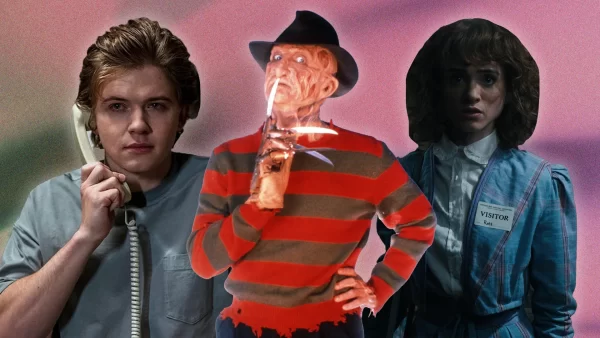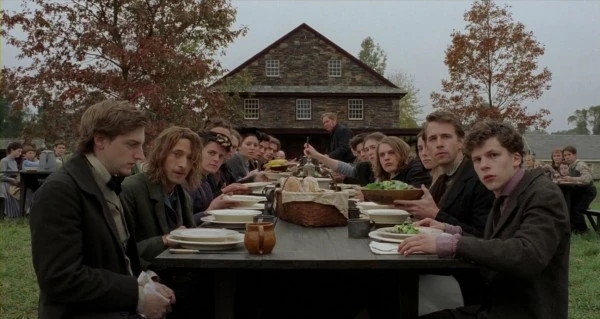The art world is a beautiful, diverse place that is filled with people from all walks of life. Carver Center is a reflection of this as one of the most diverse schools in the county, home to amazing work and even better artists. Because of the diversity of creators in the art world, gender, ethnicity, sexuality, religion, politics and many other essential parts of a person’s identity are explored. But sometimes that exploration crosses a line. Many times, when an artist crosses a line in their work, they really have no idea that they made a mistake. Sometimes, the focus of their work is even predicated on their ignorance, relying on stereotype, bias, or more draconian theming tools. Upon finding out, they usually issue an apology, alter their art, or take their art down from where it is being displayed. But art that crosses the line regarding disability is often left up and unaltered.
An estimated twenty-five percent of the world population has a disability of some kind. Twenty-one percent have officially diagnosed disabilities. But in certain countries, due to the stigma that surrounds disabled people, censuses are not accurate as disabled relatives are hidden away, and neurodivergence can go undiagnosed particularly in older generations and unsupported youth.
The United States is not a golden utopia for disabled people. For one, a disabled person cannot get married without losing their government benefits that in some cases help them stay alive, even if they were marrying another disabled person. A similar case exists for if a disabled person has significant career success, even if they still live in relative poverty after that earning shift. There are many other such examples of disability being marginalized, and ultimately punished, by the wider society. Even as much as we as Americans think we are considerate to the needs of disabled individuals, there is still a lot of changes that need to occur for them to be truly, unconditionally supported.
This Halloween, we should reflect on the ableist stereotypes that litter the horror genre. And to best characterize the issues with this dynamic, we’ll dive into the ableism that fundamentally permeates some of the most iconic and popular horror movies.

Nightmare on Elm Street features an easily recognizable horror villain; Freddy Krueger, a man with burn scars that cover his entire body. The trope of “disfigured villain” is used across all genres, from Two-Face in Batman (who is also heavily implied to be bipolar) to The Phantom of the Opera in theater. Freddy Krueger kills women because they reject him due to his burn scars. Though the topic of women being killed due to rejecting a man is a very real issue in real life and needs to be seriously addressed in the media, Nightmare on Elm Street frames disabled people as violent threats to women.
As both a woman and a disabled person, I loathe the stereotype that disabled people are either considered so weak they can’t think for themselves or dangerous enough to be locked away. I am not weak nor am I dangerous: I am simply me. Freddy Krueger’s negative disposition, combined with his stereotyped presentation, tells a different story. The intersection of misogyny in his crimes, the unnerving vibes of the film, and his disability being central to his characterization paints a deceptively unfavorable view of disabled people in general.

Another popular horror film, Halloween, features Michael Myers who, while never explicitly diagnosed with anything in the film, is locked away in an institution. In the film the character of Dr. Loomis says that Myers can not be helped due to being “a figure of pure evil.” Director John Carpenter even admitted later that Micheal Myers is supposed to have schizophrenia, which was inspired by a visit to an institution while in college where he saw a boy with schizophrenia who had “a very evil stare.”
The ableism that permeates the horror movie genre is almost irremovable and has long been ignored. There are bad people who just happen to be disabled, but horror films frame disability as the result of or the source of evil.
In most horror or suspense films, the final girl is pitted against a disabled (or at least implied to be disabled) villain. M. Night Shyamalan movies often bring to mind fairly amazing cinematography, but also some of the most poorly written and directed films to ever hit theaters. One thing that seems to stay consistent in his films, though, is the presence of disabled characters. The most famous film that comes to mind is Unbreakable, starring Samuel Jackson as Mr. Glass, a villain with Osteogenesis Imperfecta, a condition that causes brittle bones in those who have it. But it’s another of his films that is the most debated when it comes to disabled representation.

In The Village, “an Amish-style community lives cut off from the outside world by the woods, in which they believe dangerous creatures exist. They have an uneasy truce with the creatures – if they stay out of the woods, they are left unharmed. When one of the young villagers becomes ill, the girl who loves him ignores the elders of the village to make a bid to the next town to fetch medicine.” While the concept is mildly interesting, the movie does subvert the trope of “disabled villain vs. final girl”, as the protagonist, Ivy Walker (played by Bryce Dallas Howard) is a blind young woman . None of the actors cast were disabled, but this is to be expected of a movie made in 2004. (However it is of note that Toph Beifong, one of the best blind disabled representations out there, debuted only two years later.) Overall, the character of Ivy is a mediocre example of disabled representation. She’s smart, beloved in the community and by her family (who only help her when she asks, so not the worst family of a disabled character in media) and subverts some tropes by being a female disabled protagonist in a horror movie (that lives!). She also ends up finding a love interest that isn’t one-sided in the character Lucius Hunt (played by Joaquin Phoenix), which is a breath of fresh air as well.
However, like with most suspense movies, the problem always lies in the villain. With the first act of the movie, we believe that the villains are the mysterious monsters in the woods (called, creatively “Those We Do Not Speak Of”). The entire reason Ivy ventures into the woods in the first place is because Lucius was stabbed out of jealousy by Noah Percy, Ivy’s childhood friend who is severely autistic and in love with her. Having two disabled characters be friends isn’t necessarily a bad thing, only slightly stereotypical. However, Noah, as a neurodivergent man, is portrayed as a danger to the safety of those in the village, and a danger to Ivy and Lucius (who isn’t explicitly confirmed as disabled but some critics view him as a “high functioning autistic person.”) The Village was an interesting concept for a disabled movie, but it would have been better had it been created, written, and/or directed by disabled people, who had input on the process to make sure it did not take for granted the disabled perspective when considering its characters and their relationships.
The disabled community is the largest minority on the planet, a community encompassing almost two billion people. We are not tragedies, nor are we only an inspirational video on the local evening news. We deserve to be seen as who we are. And as a first step, we should have our lives properly represented with dignity in media.




